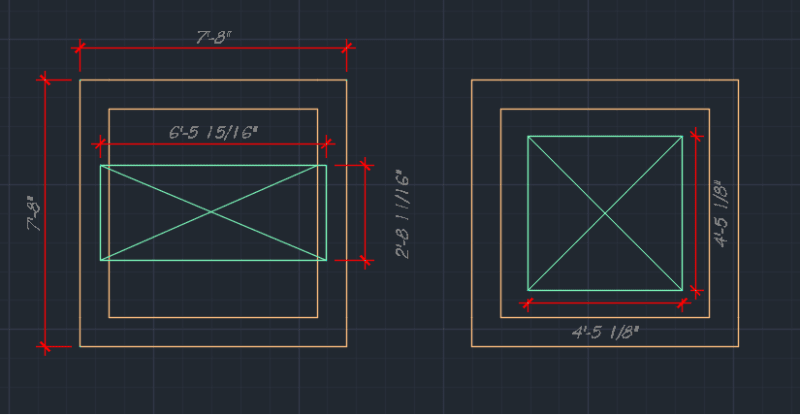Redacted
Structural
- Mar 12, 2016
- 160
Hi there, I need to design a few traffic rated manholes to pull some fibre cables (they cannot be pre-cast). They will be considered submerged and conservatively designed with the water table at the top and cast underground. The manhole structures are quite small 6'x6'x4' (lxwxh); the client wants to have one of these large manhole covers used. See below, the proposed manhole cover in light blue and the manhole wall in light brown.

I am currently thinking of the quickest and easiest way of analysing and designing the cover slab with these large holes (by hand).
I am thinking of setting the slab thickness as 8" and either designing this using the method of strips with strong bands surrounding the holes/on free edges or just designing it as a 2' wide beam that is 8" tall. My main concern would be the torsion as the beam/slab would essentially be supported on 3 edges(if considering the first schematic), with the manhole cover frame concentrating the forces on the free edge (or am I overthinking this?).
Is there a better way of analysing/designing this that I am not thinking of?

I am currently thinking of the quickest and easiest way of analysing and designing the cover slab with these large holes (by hand).
I am thinking of setting the slab thickness as 8" and either designing this using the method of strips with strong bands surrounding the holes/on free edges or just designing it as a 2' wide beam that is 8" tall. My main concern would be the torsion as the beam/slab would essentially be supported on 3 edges(if considering the first schematic), with the manhole cover frame concentrating the forces on the free edge (or am I overthinking this?).
Is there a better way of analysing/designing this that I am not thinking of?

